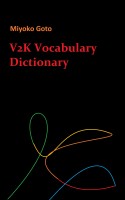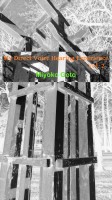I found a very interesting post in a website sharing many information about the Fukushima nuke disaster. Here is the list of acceptable legal limits per 1kg. WHO's emergency limit to avoid the death from the starvation is 1000 Bq/kg. Notice the fishes and the "washed" vegetables have more than 8 - 54 times above the WHO regulation. The contaminated area cultivating the rice got the legal limit of 5000 Bq/kg. Well, combining the foods from abroad makes Japanese to have less contamination in their body.
By the way, there are some "hot spots" in Tokyo which got seriously high level of soil contamination like in Fukushima. Next post would be about such information. I hope people reading my blog get some understanding of how to stay safe in Japan.
67 :@(チベット自治区):2011/05/18(水) 11:24:27.66 ID:ZZCficiA0
1㎏あたりのベクレル数(Bq/kg)
************0.111 アメリカの法令基準 (水)
************0.5 ドイツガス水道協会
************1 WHO基準(水)
***********10 WHO基準(野菜)
***********10 日本の3月16日までの基準値(水)
**********100 日本の乳児飲用 に関する暫定的な指標値(水)
**********170 アメリカの法令基準(飲食物)
**********210 東京都金町浄 水場
**********300 日本の3月17日以降の暫定指標(水)
**********370 日本の3月16日までの基準値 (野菜)
**********965 福島県飯館村の水道水
*********1000 WHO基準 ←餓死を避ける為に緊急時に食べざるを得ない非常事態時の数値
*********2000 日本の3月17日以降の暫定指標(野菜)
*********3201 東京都江東区亀戸の土 4月10~20日 ←★
*********5000 汚染農地の稲作制限値
*********8300 千 葉旭市の水洗いした春菊 ←26日時点
********14400 福島産コウナゴ4/22 セシウム
********27650 福島市南部(同市光が丘)の土壌 セシウム 3/19
********54100 茨城の水洗いしたホウレン草 ←食べても直ちに健康に影響があるわけではない
********87000 原発付近の海底の土砂のセシウム137のみの数値
*******158000 飯舘の学校の砂4/5ヨウ素 セシウム137は5万8000 セシウム134は5万4700
*******780000 浪江町の土壌 セ シウム134+セシウム137合計 5/6
******5190000 福島飯舘村の水洗いしてない雑草
***3900000000 3号機で作業員の足がつかった溜まり水
2900000000000 2号機の溜まり水
(http://shadow-city.blogzine.jp/net/2011/05/3000_efa0.html#more)
















0 comments:
Post a Comment